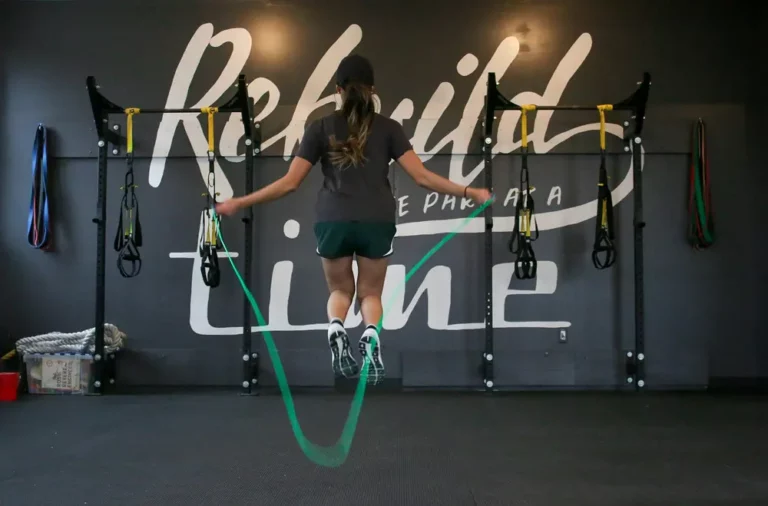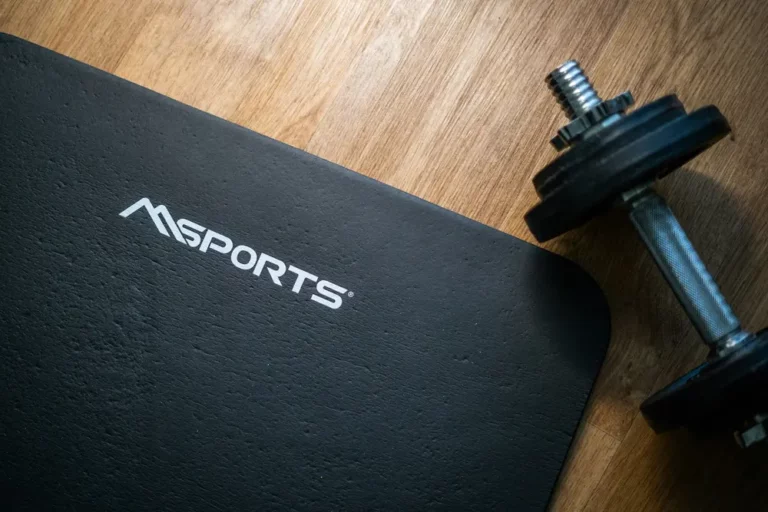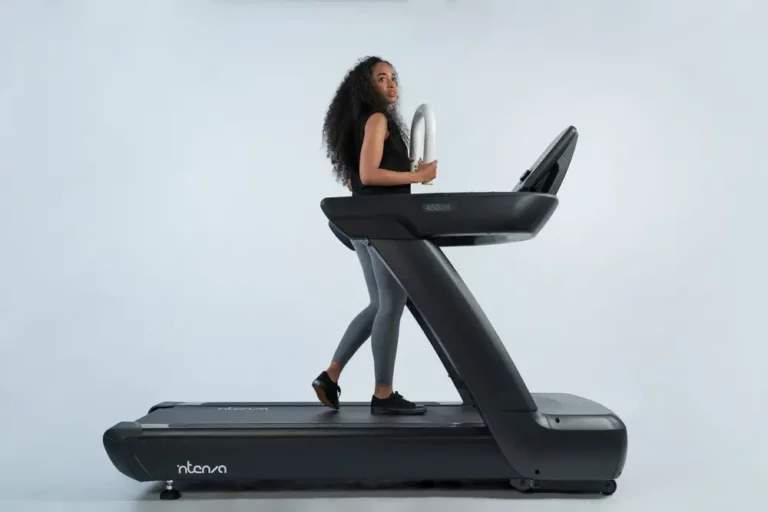Why Does My Wrist Hurt When I Curl? Tips to Prevent Injury
Ever found yourself wincing in pain during a bicep curl? You’re not alone. Wrist pain during curls is a common complaint among fitness enthusiasts. It’s frustrating, especially when all you’re trying to do is work on those arm gains. But instead of building muscle, you’re left wondering why your wrist feels like it’s under siege.
The truth is, several factors could be behind that nagging wrist pain. From improper grip to pushing too hard without the right form, it’s easy to turn what should be a beneficial exercise into a source of discomfort. I’ve been there, and I know how annoying it can be. So, let’s dive into understanding why your wrist hurts when you curl and, more importantly, how to fix it.
Understanding Wrist Pain During Curls
Curling exercises are a staple in my fitness routine, not just for the aesthetic appeal but for the sheer satisfaction of feeling strong and capable. However, there’s a nagging issue that can dampen this experience: wrist pain. It’s a common complaint that I hear too often, and I’ve experienced it myself. So, let’s dive into why this happens and how we can address it.
Common Causes of Wrist Pain in Curling Exercises
Wrist pain during curls can feel like a setback, but understanding its root causes is the first step to overcoming it.
- Improper Grip: This is a big one. An incorrect grip, whether too wide or too narrow, places undue stress on the wrists. It’s crucial to find that sweet spot where your grip aligns naturally with your wrist’s movement.
- Overloading: We’re often tempted to lift heavier to accelerate progress, but excessively heavy loads can overburden the tendons and ligaments in the wrist, leading to pain.
- Lack of Support: Without proper wrist support, the stability of the wrist joint is compromised, which increases the risk of injury or strain.
- Prior Injuries: Previous wrist injuries can haunt you during bicep curls, especially if they haven’t fully healed or if the wrist strength wasn’t adequately rebuilt.
Addressing these issues can significantly reduce or even eliminate wrist pain during curls. Sometimes, solutions are simple, like adjusting grip or reducing weight. Other times, it might require more attention, like rehabilitating an old injury.
The Anatomy of the Wrist and Its Role in Curling
The wrist is a complex structure made up of several small bones, ligaments, and tendons, allowing for a wide range of movement. During curls, the wrist isn’t just a passive player; it actively stabilizes the hand to enable a clean, powerful curl.
- Bones: The wrist is composed of eight small bones known as carpal bones. These bones support the structure of the wrist.
- Tendons: Tendons connect muscle to bone. In curling, they help transmit the force from the biceps to the forearm and hand.
- Ligaments: Ligaments connect bone to bone, providing stability to the wrist joint during the weight-bearing phases of a curl.
When curling weights, this intricate network of bones, tendons, and ligaments works harmoniously to support and execute the movement. However, when something goes awry—be it through improper form, excessive load, or an existing weakness—it’s this delicate balance that’s disrupted, leading to pain.
Understanding this anatomy underscores the importance of respecting the wrist’s role in curling exercises. It’s not just about the biceps or the visual payoff. It’s about ensuring every part of the chain, from muscle to joint, is healthy, supported, and properly engaged.
Tendon-Related Issues and Solutions
In the journey to understanding why my wrist hurts when I curl, I’ve come to realize that tendon-related issues are a common culprit. Let’s dive into identifying these conditions and explore strategies to reduce irritation.
Identifying Tendon Conditions Like Tendinitis and Tendinopathy
Discovering the root cause of wrist pain can often lead us to tendinitis and tendinopathy, two conditions that aren’t just fancy medical jargon but real issues affecting many of us in the fitness community. Tendinitis refers to the inflammation of a tendon, the thick fibrous cords attaching muscle to bone. It manifests through pain and tenderness just outside the joint. On the other hand, tendinopathy is a broader term that encompasses both inflammation and micro-tears in the tendon due to overuse.
Symptoms of these conditions include a dull ache when moving the affected limb or joint, tenderness, and mild swelling. Recognizing these signs early is crucial because they are indicators that our tendons are under distress. This is especially relevant for those of us loving our curl sessions; the repetitive motion can exacerbate these conditions if we’re not careful.
Strategies for Reducing Tendon Irritation
Knowing what we’re up against, the next step is finding ways to soothe our aching wrists and get back to our beloved bicep curls. Here’s what’s worked for me:
- Adjusting Curl Technique: Sometimes, it’s not about stopping but rather adapting. I’ve made sure to keep my wrist in a neutral position, avoiding too much flexion or extension during curls.
- Gradual Load Increase: I had to learn the hard way that my eagerness to lift heavier could backfire. Increasing weights gradually gives our tendons time to adapt, reducing the risk of irritation.
- Incorporating Rest Days: Giving our body time to heal is critical. I’ve found mixing in rest days and lower-intensity workouts can prevent overuse injuries.
- Supportive Gear: Using wrist wraps or braces can offer additional support during workouts, limiting the strain on our tendons.
By implementing these strategies, we can potentially alleviate some of the discomfort caused by tendinitis and tendinopathy, making curls less of a pain and more of the pleasure they’re meant to be.
Addressing Wrist Instability
Recognizing and Managing Lax Wrist Joints
In my journey to conquer wrist pain during curls, I found that recognizing and managing lax wrist joints was a pivotal step. When your wrist joints lack stability, the muscles and tendons are forced to work overtime. This can lead to increased strain and, eventually, discomfort or even injury. Laxity in the wrist can be a result of natural anatomical variations, previous injuries, or simply the cumulative wear and tear from repetitive motions like those in weightlifting.
The first step in managing this condition is to become aware of your wrist’s positioning during exercises. I made a conscious effort to maintain a neutral wrist position, ensuring that my wrist wasn’t bending too far forward or backward. For many of us, this might require a reduction in the weight we’re curling until we can strengthen the supporting musculature around the wrist. Additionally, incorporating specific wrist-strengthening exercises can significantly improve joint stability. Exercises like wrist curls and extensions, performed with light weights, can fortify the muscles surrounding the joint, offering better support.
The Role of Wrist Wraps for Added Stability
Another game-changer for me was understanding the role of wrist wraps for added stability. When I realized that my wrist stability wasn’t solely reliant on muscle strength and joint tightness, wrist wraps became a staple in my gym bag. They offer external support, allowing the wrist to distribute the weight being lifted more evenly and reduce the strain on any single point in the joint.
Using wrist wraps isn’t about masking the problem or ignoring body signals but rather about providing additional support as you strengthen the area. It’s crucial to choose wrist wraps that are comfortable but provide enough support to prevent excessive movement during lifts. Pro tip: Make sure they’re tight enough to secure the wrist but not so tight that you cut off circulation.
For days when I forget my wraps at home, wrapping athletic tape around my wrists serves as a handy alternative. While not as supportive for heavy lifts, the tape can still offer enough stability to get through a workout with minimal discomfort. Regardless of the method, providing your wrists with external support can be a valuable tool in addressing wrist instability during curls.
Nerve Compression and Its Impact
Understanding Median Nerve Compression in Curling
When I first started feeling that nagging pain in my wrist during bicep curls, I had no clue what was causing it. After a bit of research and consulting with a health professional, I found out about median nerve compression, a condition notably linked to Carpal Tunnel Syndrome (CTS). It turns out, the way we position our wrists and the repetitive motion of curling can irritate or exacerbate this condition. The median nerve runs from our forearm into the hand through a small space in the wrist called the carpal tunnel. When it’s compressed, it can cause symptoms like pain, numbness, and that tingling sensation, known as “paresthesia,” in the hand. Considering the mechanics of a curl, especially with a pronated grip, there’s increased risk for those already prone to nerve compression issues.
Approaches to Alleviate Carpal Tunnel Syndrome Symptoms
Navigating through the discomfort of CTS doesn’t mean we have to give up our beloved curls. There are several effective strategies to manage and alleviate the symptoms. First and foremost, wrist positioning is crucial. I’ve learned to be hyper-aware of keeping a neutral wrist position throughout the entire movement. This simple adjustment can significantly reduce the strain on the median nerve.
Wrist wraps have been another game-changer for me. They provide that extra support, ensuring my wrists stay aligned, and they also distribute the workload more evenly across the forearm muscles, thereby reducing the pressure on the median nerve.
For those who might be experiencing more severe or persistent symptoms, seeking professional guidance is key. Physicians can offer specific treatments such as wrist splints for night use, which keep the wrist in a neutral position, or corticosteroid injections for inflammation reduction. Physical therapy is another avenue where targeted exercises can strengthen the wrist and forearm muscles, improving stability and reducing the likelihood of compression.
The Importance of Proper Form
When it comes to building muscle and strength, I’ve learned that there’s more to it than just lifting weights. Proper form plays a crucial role, especially in preventing injuries that could set you back in your fitness journey. Let’s dive into why proper form is critical when performing curls and how adjusting your grip and choosing the right equipment can make a difference.
Correcting Grip and Wrist Position in Curls
First off, let’s talk about grip and wrist position. It’s something I had to learn the hard way, but getting it right has been a game-changer for me. When performing curls, maintaining a neutral wrist position is key. This means your wrist should be in a straight line with your forearm, not bent forward or backward. I’ve found that keeping my wrists neutral helps distribute the weight more evenly across my arm, reducing the strain on my wrists.
But how do you ensure your wrist stays neutral? Start by focusing on your grip. Make sure you’re not gripping the barbell or dumbbell too tightly. A death grip can cause unnecessary stress on your wrist. Instead, aim for a firm yet relaxed grip, allowing for a slight flex in your hand. This subtle change has made a significant difference in how my wrists feel during and after my workouts.
Choosing the Right Equipment: EZ-Curl Bar vs. Straight Bar
Let’s talk equipment. The debate between using an EZ-curl bar and a straight bar for curls is ongoing, but here’s my take based on experience. The EZ-curl bar is designed with curves that allow for a more natural hand position. This design can significantly reduce the stress on your wrists and elbows, making it an excellent choice for anyone experiencing discomfort during curls.
On the other hand, a straight bar keeps your hands in a fully supinated position (palms facing up) throughout the curl, which can increase the tension on your wrist and elbow joints, especially if you already have some form of wrist discomfort. While it’s great for maximizing bicep engagement, it’s not for everyone.
I personally prefer the EZ-curl bar for most of my curl exercises. It’s helped me focus on targeting my biceps without worrying about wrist pain. However, I occasionally incorporate the straight bar to switch things up and challenge my muscles differently. The key is to listen to my body and adjust accordingly, always prioritizing form and comfort over everything else.
Progressive Training and Warm-up Techniques
Gradual Progression in Weightlifting to Avoid Wrist Strain
When it comes to preventing wrist pain during our workouts, especially with curls, I’ve found that nothing beats a slow and steady approach. We often get tempted to lift heavier weights hoping for quicker results, but our wrists might not be ready for such sudden demands. It’s crucial to gradually increase the weight we’re curling to give our wrists a chance to strengthen and adapt. By doing so, we significantly reduce the risk of strain and injury.
Starting with lighter weights doesn’t mean our workouts are less effective. On the contrary, it allows us to focus on our form and ensure that we’re performing each curl with precision. This meticulous attention to proper technique not only enhances muscle growth but also safeguards our wrists from unnecessary stress.
Effective Warm-up Exercises for Wrist Health
Before jumping into our curling routine, dedicating time to warming up is a game-changer for wrist health. I’ve discovered several warm-up exercises that specifically target the wrist area, preparing it for the workout ahead. Wrist rotations are my go-to starter, where I gently rotate my wrists in circular motions for about 30 seconds. This simple movement helps to increase blood flow and flexibility.
Another warm-up favorite of mine is the wrist flexor and extensor stretch. By extending one arm in front of me with the palm facing down and gently pulling the fingers back with the other hand, I feel a nice stretch along the underside of my forearm and wrist. I hold this for about 15-20 seconds on each side and then switch to pushing my fingers towards the floor for an equally effective stretch on the top side of my wrist.
When to Seek Professional Help
Dealing with wrist pain can often feel like navigating through a maze—confusing and somewhat daunting. In my journey through fitness, I’ve learned that recognizing when to seek professional help is just as crucial as understanding the root causes of the pain. Let’s dive into some vital signs and the beneficial role of physical therapy.
Signs You Should Consult a Fitness Professional
When my wrist starts complaining during curls, I first try to adjust my form and maybe dial down the intensity. However, there are times when these adjustments just don’t cut it. Here are some red flags that signaled to me it was time to consult a fitness professional:
- Persistent Pain: If the pain lingers for days without any relief or gets worse, it’s time.
- Reduced Range of Motion: Struggling to rotate my wrist or grip objects properly? Definitely a sign.
- Swelling or Discoloration: Any visible changes in the wrist indicating inflammation or bruising.
- Clicking Noises: If I hear any unusual sounds from my wrist during movement, that’s concerning.
A fitness professional can pinpoint the exact issues in my form or routine contributing to the pain. Their expertise in biomechanics often sheds light on subtle mistakes I might be overlooking.
Role of Physical Therapy in Treating Wrist Pain
I can’t overstate the importance of physical therapy (PT) in navigating wrist pain. It’s been a game-changer in my recovery and maintaining wrist health. Physical therapists specialize in movement and can develop a customized rehab plan that addresses the specific causes of my pain. Here are some aspects in which PT has been particularly beneficial:
- Strength and Flexibility Programs: Tailored exercises to strengthen my wrist and improve flexibility without causing further harm.
- Manual Therapy Techniques: Hands-on treatments to mobilize the wrist joints and alleviate pain.
- Pain Management: Strategies to manage pain that don’t rely on medication, such as ultrasound or electrical stimulation.
- Education and Prevention: Learning about wrist health and preventive measures to avoid future injuries.
In my experience, combining professional guidance with a dedication to rehab exercises and preventive practices significantly improved my wrist situation. Pain should not dictate my fitness journey, and with the right help, it doesn’t have to.
Conclusion
I’ve shared quite a bit on how to keep your wrists safe and sound while curling. Remember, it’s all about technique—keeping that wrist neutral, choosing your equipment wisely, and not rushing your progress. Those warm-ups aren’t just filler; they’re crucial for prepping your wrists for the work ahead. And if things feel off, don’t push through the pain. Seeking professional help can make a world of difference, ensuring you’re not sidelined by injury. Let’s keep those curls effective and our wrists happy. Happy lifting!
FAQ – Frequently Asked Questions
How do you fix a sore wrist?
To aid in the recovery of a sore wrist, it is advisable to follow the RICE method (Rest, Ice, Compression, Elevation). Resting the wrist and avoiding activities that exacerbate the pain is crucial. Applying ice can help reduce swelling and pain. Compression with an elastic bandage and elevation above the heart can also be beneficial. Incorporating gentle stretching and strengthening exercises as the pain decreases can help in recovery.
How long does DOMS last?
The NHS suggests that DOMS will typically last between 3 and 5 days, yet you’re likely to feel your muscles loosen up after the first couple of days. Should I workout with DOMS? Although training with DOMS pain may feel like the last thing you want to do, it can actually be good for your recovery.







